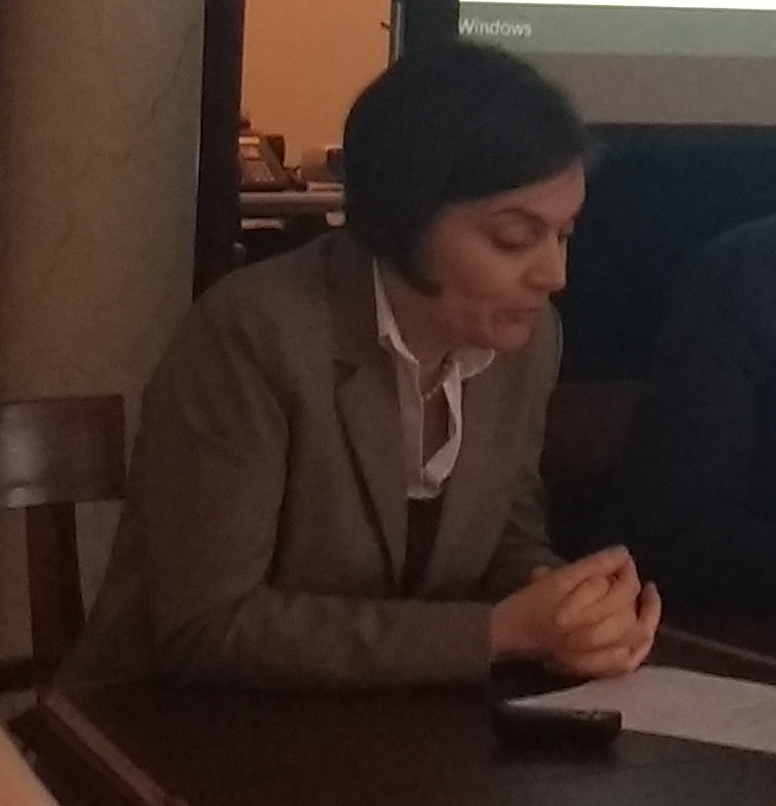Affiliation: Bibliothèque Nationale de France

Dr. Frédérique Duyrat is the current Director of the Department of coins, Medals and Antiquities in the National Library of France (Bibliothèque nationale de France). She is a specialist in the history and numismatics of the Classical and Hellenistic Near East, and a former research fellow at the French Institute of Archeology of the Near-Orient in Damascus (1996-1998). Dr. Duyrat was a lecturer in ancient history at the University of Orléans from 2001 to 2009 before joining the Department of Coins, Medals and Antiquities of the National Library of France in January of 2010 and is now responsible for the collection of Greek coins. She was an associate researcher at the Ernest Babelon Center, Archaeo-materials Research Institute (UMR 5060, CNRS) from 2002 to 2013 and is now associated with the Orient and Mediterranean – Semitic Worlds research team (University Paris – Sorbonne) and at the archeology doctoral school of the University of Paris I – Panthéon Sorbonne. Dr. Duyrat is an AIA Metcalf Lecturer for 2022/2023.
Coin hoards are deeply embedded in human imagination. They carry images of limitless wealth, gold and good fortune. For the historian, they bring important data on wealth but also on the communities that created these coins and used them. This lecture will focus on coin hoards in the Eastern part of the Greek world, from Greece to Iran, during the Classical and Hellenistic periods. The analysis of their spatial and temporal evolution, compared with written and archaeological sources tell a lot about centers of power, places and practices of commerce, historical occurrences, such as wars, which influence monetary production, and the habits of users.
Short bibliography and/or website on lecture topic (for lay reader):
Duyrat 2016 : Frédérique Duyrat, Wealth and Warfare. The Archaeology of Money in Ancient Syria, New York, 2016 (Numismatic studies no. 34).
This lecture explores, on the basis of archaeological evidence and literary and documentary sources, the question of how private individuals in the Greek world stored and protected their wealth. It focuses on metal, one of the most durable of goods and the only one that is well documented by texts and archaeology. It will explore the reasons to hide riches and the way to do it, from the containers used to the many places that the Ancients considered safe.
Short bibliography and/or website on lecture topic (for lay reader):
Forstrom Z.J., 2015, « Whatever You Want Me to Be: The Purse, Identity, and Exchange in Ancient Greece », Art History Master’s Qualifying Papers. https://ir.stthomas.edu/cas_arthistory_mat/1
In 332, Alexander the Great started issuing gold coins with an image of Victory, symbol of his conquest of the Phoenician city of Tyre after a 6 months siege. This event gave him complete command of the sea and allowed him to penetrate eastward, to the core of the Persian Empire. In the following years, these coins and other gold coins were minted in huge quantities and flooded across his Empire. Symbol of the power of the Macedonian conquerors, they also shed light on the upheaval and profound changes brought by Alexander.
Short bibliography and/or website on lecture topic (for lay reader):
http://numismatics.org/pella/
Arnold-Biucchi 2006 : Carmen Arnold-Biucchi, Alexander’s Coins and Alexander’s Image, Cambridge, 2006.
Dahmen 2007 : Karsten Dahmen, The Legend of Alexander the Great on Greek and Roman Coins, 1st ed., New York, 2007 (Taylor & Francis eBooks).
Duyrat 2018 : Frédérique Duyrat, « Alexander’s Gold Distaters », dans Oğuz Tekin (éd.), Second International Congress on the of History of Money and Numismatics in the Mediterranean World, 5-8 January 2017, Antalya: Proceedings = İkinci Uluslararası Akdeniz Dünyasında Para Tarihi ve Numismatik Kongresi, 5-8 Ocak 2017, Antalya : Bildiriler, Antalya, 2018, p. 151‑159. Le Rider 2007 : Georges Le Rider, Alexander the Great: Coinage, Finances, and Policy, Philadelphia, 2007 (Memoirs of the American Philosophical Society ; v. 261). Price 1991 : Martin Jessop Price, The Coinage in the Name of Alexander the Great and Philip Arrhidaeus: A British Museum Catalogue, Zürich; London, 1991.